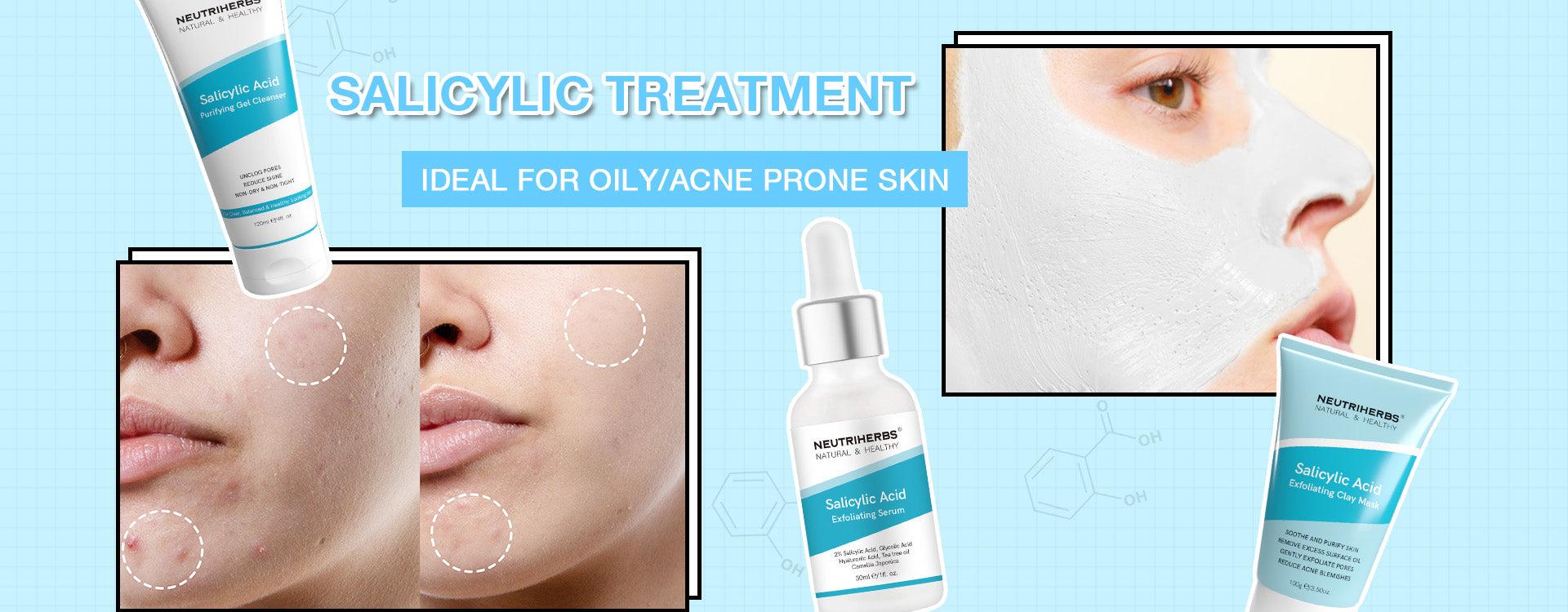If you are not familiar with acids, you may be wondering what is the point of using them? You should know that the skin is made up of a large number of skin cells which are renewed over a cycle of approximately one month. During this month, these cells accumulate and gradually rise to the surface of the skin. Result: the complexion becomes dull, the skin texture thickens, the pores become clogged and desquamation may appear (small patches of skin that peel). This is where chemical exfoliation comes in! Regular exfoliation accelerates the phenomenon of cell renewal while getting rid of dead skin cells. The result: a more regular skin texture and better collagen production,
Two types of exfoliation exist mechanical exfoliation and chemical exfoliation. Mechanical exfoliation is what is more commonly referred to as a scrub. It is very often composed of “grains” which will exfoliate the skin by the action of friction against the skin. The risk with this type of exfoliation is to damage your skin barrier and to sensitize your skin in the long term. In the case of chemical exfoliation, these are active ingredients that penetrate deeper into the skin to remove dead cells without you having to “rub” your skin.
AHA, BHA, PHA are chemical exfoliators but what's the difference? All of these components are called hydroxyl acids (by their scientific name) but they fall into 3 categories.
AHA ( Alpha Hydroxy Acids)
In the case of AHAs, there are several types of acids, the most famous are:
Glycolic acid :
Of all the AHAs, glycolic acid (which comes from sugar cane) is the most effective. As it is an active ingredient that has a small molecular size, it penetrates the skin in depth to better exfoliate it. It has a visible effect on the skin texture and the radiance of the complexion. It also helps regulate sebum production. It is one of the flagship acids of our peeling mask, the face mask which renews cells without attacking the skin barrier.
Lactic acid :
Resulting from the fermentation of milk or certain fruits, it is one of the mildest acids which will correspond perfectly to the most sensitive skin. Its properties allow it to promote good hydration maintenance of the skin. It is also found in our peeling mask to complement the action of glycolic acid and give a boost to dull complexions.
Mandelic acid :
Coming from almonds, this acid penetrates less deeply into the skin and acts more on the surface, which reduces all possible risks of irritation. It also helps to reduce hyperpigmentation (mainly spots) and even out the complexion.
AHA Serum For Exfoliating & Smoothing Skin
With a blend of glycolic acid, lactic acid, citric acid, this night serum takes away the aged horniness, speed up skin's metabolism, shrink the look of pores and slow down melanin deposit to keep skin smooth bright, and charming. Furthermore, natural plant extracts- Calendula and Chamomile, powerful hydrating hyaluronic acid help to strengthen the skin's moisture barrier and soothe the skin. Only one step, make your skin significantly firm, soft, and restore elasticity.
AHA Serum Benefits:
▪Help exfoliate
▪Speed up your skin's metabolism
▪Help shrink pores
▪Slow down melanin deposition
▪Soothe the skin
BHA (Beta Hydroxy Acids)
Salicylic acid
Salicylic acid is the best known BHA. It is generally used in its synthetic form. It has a targeted action on comedones (blackheads) and allows them to be dissolved effectively. It is more suitable for combination to oily and acne-prone skins that require a smoother surface.
Salicylic Acid Range For Oily & Acne Skin
Benefits:
▪ Soothes and purifies skin
▪ Removes excess surface oil and minimizes shine
▪ Gently exfoliates pores
▪ Helps reduce the number of acne blemishes
PHA (Poly Hydroxy Acids)
PHAs are a group of acids with a larger molecular size: they penetrate less deeply into the skin and are therefore ideal for skin with certain skin conditions (eczema, rosacea, dryness, etc.). Among them, we find:
Lactobionic acid :
Derived from lactose, it is hydrating, antioxidant and soothing. It is a particularly suitable ingredient for dry, parched or dehydrated skin since it is non-irritant.
Pro Tip: Don't forget to apply sunscreen well if you are using exfoliating acids. Indeed, they tend to be photosensitizing and therefore react in contact with UV rays. This can cause the appearance of spots. You just need to choose the acids that are most suitable for your skin.
Now we hope you understand the benefits of chemical exfoliation and start using it in your routine accordingly (if you haven't already). To accompany the use of exfoliating acids, we also advise you to practice a double daily cleansing





